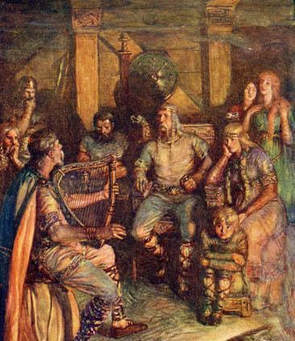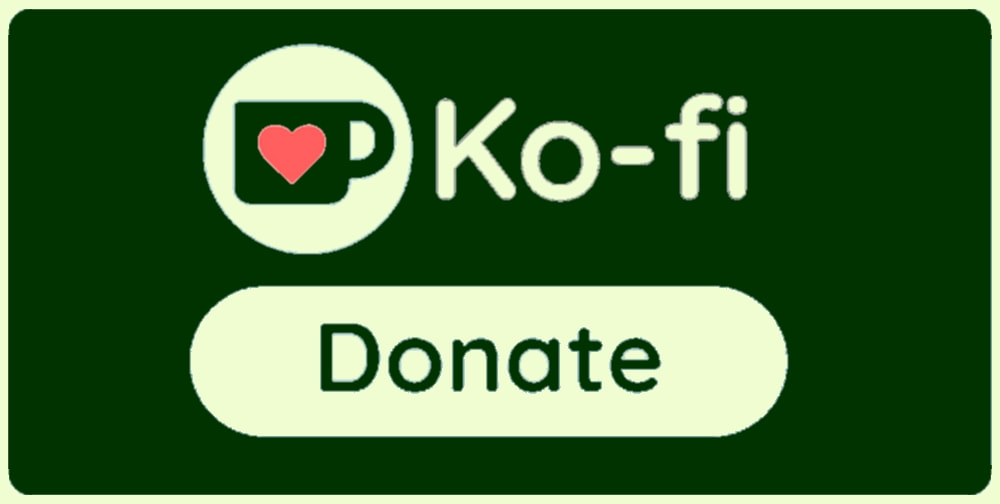Here's a working definition of myth, to get us started: Stories people have believed for many generations, which cannot be fully confirmed, usually concerning their own origins, culture and gods. These stories have a fairly high degree of stability over time.
| The earliest sources we have for Celtic myths are manuscripts created from the 11th to 16th centuries. Most scholars are of the opinion, based on language and other clues, that the material in these old books is older than the books themselves. Some of it has the kind of errors which show that it was copied from another written source (now lost) and some of it shows the hallmarks of having been passed down orally for a long time, before it was finally written down. |
Not many of us are ever going to be able to read these things in their original. Even if you speak fluent Irish or Welsh, it wouldn't be easy, because the language has changed so much. I speak English fluently, but I can't read Old English at all, nor Middle English very well. So unless you are a scholar of early forms of Irish and Welsh, you might appreciate a translation. So let's talk about that.
Translations vary. Extremely literal word-by-word translations can be harder to understand than you'd think. They don't explain things like idioms, except maybe in footnotes, and don't always deal well with poetry, or the many grammatical differences between languages. On the other hand, they may give insights that other translations don't. Good examples of this are R. A. S. MacAlister's Lebor Gabála Érenn or Morgan Daimler's The Treasure of the Tuatha De Danann.
Most translations are more "faithful" than literal. The translator tries their best to convey the exact meaning of each phrase, in a way that allows the reader to easily digest it. (Like Patrick Ford's translation of the Mabinogi.) You may also find it helpful to choose a fairly recent translation. Translations from the 19th and early 20th centuries are often available to read free online. Some of them are good, but if you don't enjoy reading Victorian prose, you may give up. (For example Whitley Stokes' The Voyage of Mael Duin's Boat or Lady Charlotte Guest's Mabinogion.)
Next in line for reading choice might be a "faithful re-telling". This is where the author has read the material, either in translation or through their own scholarship, but put it into their own words more than a translator would. A faithful re-telling might simplify the language for children, or condense the action a little for a story collection or encyclopedia, or the author might simply prefer to put it in their own words. However, it shouldn't remove or add anything important. The question here is always "How faithful?", and if you haven't read the myth from a good translation beforehand, how will you know? The fact that I don't recommend any here doesn't mean that none exist. I have seen authors make a good job of individual stories.
Finally there are looser renderings of myths. You may see these in collections in discounted book bins, read them on websites, or find them in literary forms like novels. Some of them are good from a literary standpoint but a long way from the original. Others may have been passed around the internet without anyone bothering to check their accuracy. I generally find the ones written by authors who are members of the relevant culture (James Stephens' Irish Fairy Tales) preferable to those writing from an alien culture who are just mining mythology for a good story with supernatural elements. (Evangeline Walton's Mabinogion Tetralogy for example.) Authors may also appropriate deities and other characters from myths and put them into their own stories, but don't expect to learn much about mythology by reading them.
For anyone wishing to really absorb and engage with Celtic mythology, I would suggest that they read translations first, rather than think they will work their way up via a fantasy novel or a bad synopsis. It's human nature that the first version of a story we hear sticks in our mind as the most true version, in spite of us trying to override that with logic later.
| The primary body of Welsh myth is The Mabinogi (or Mabinogion). It is divided into four "branches" or sections, which each stand on their own, but loosely relate to one another. Another seven stories are associated with the Mabinogi, because they were found in some of the same early manuscripts. Some of these will probably be included when you buy a translation of the Mabinogi in book form. The Welsh myths were written down later than the Irish material, the manuscripts are generally in better condition and the tales are much less like a jigsaw with its pieces scattered through many books. Some scholars fell that there is material missing from the Mabinogi, but what, and how much is missing is open to opinion. |
One author/translator deserves very special attention for her treatment of the Irish material: Lady Augusta Gregory, who made a bold attempt to put the jigsaw of fragments together into a cohesive, chronological narrative for the first three cycles. Certainly, scholarship and attitudes have moved on considerably since Lady Gregory published her translations, and a hundred years later the language is becoming dated. However, I still recommend the collection of her work, called Complete Irish Mythology, as a good way to read the Irish myths for the first time. After you've done that, you will probably want to find newer and better translations of various stories, or delve into early Irish texts that aren't included by Lady Gregory, but you will have a much better grasp of the big picture.
Another handy book of the Irish cycles is Ancient Irish Tales, edited by Cross and Slover. This contains much of the same material as Complete Irish Mythology, although some tales have been edited for length. The translations are also good, and the language a little more approachable.
The Mabinogion is not that long. Even with some notes and all the extra tales it makes a manageable sized book. Complete Irish Mythology is heftier (around 550 pages), but not enormous if you think of it as a trilogy in one volume. It's helpful to read the four branches of the Mabinogi or Complete Irish Mythology in order the first time, but don't devour them too quickly. There is a great deal of action within just a few pages in these stories, and not much exposition. Give yourself time to let each little story sink in. Give yourself time to ask questions, even though you may have no answers. Live with these stories and savour them. There are many scholarly interpretations of these tales, but what is your interpretation? What are your instincts telling you? Take the time to go back over things that don't make sense, or that haunt you. Remember that people once grew up hearing these stories regularly, and continued to hear them throughout their lives. It is only by living with them, that you will find their true depth.
You might like to read the follow-up to this post - Seeking Meaning in Celtic Mythology.
You can also find short reviews of books on Celtic topics on my YouTube channel. Look for the Books from the Coffee Table series




 RSS Feed
RSS Feed




